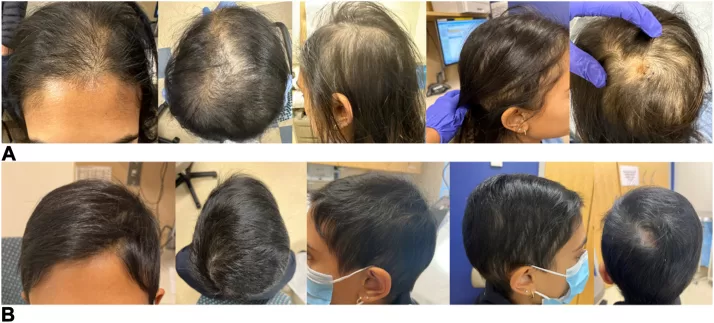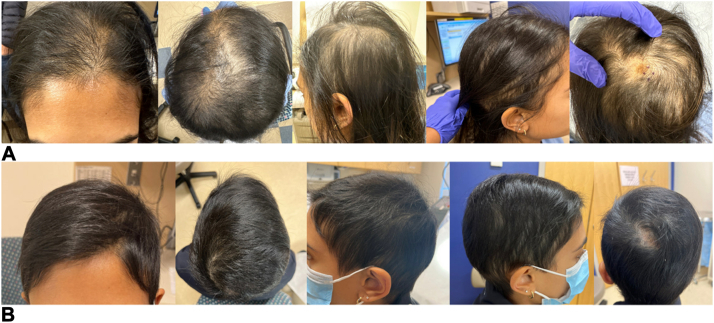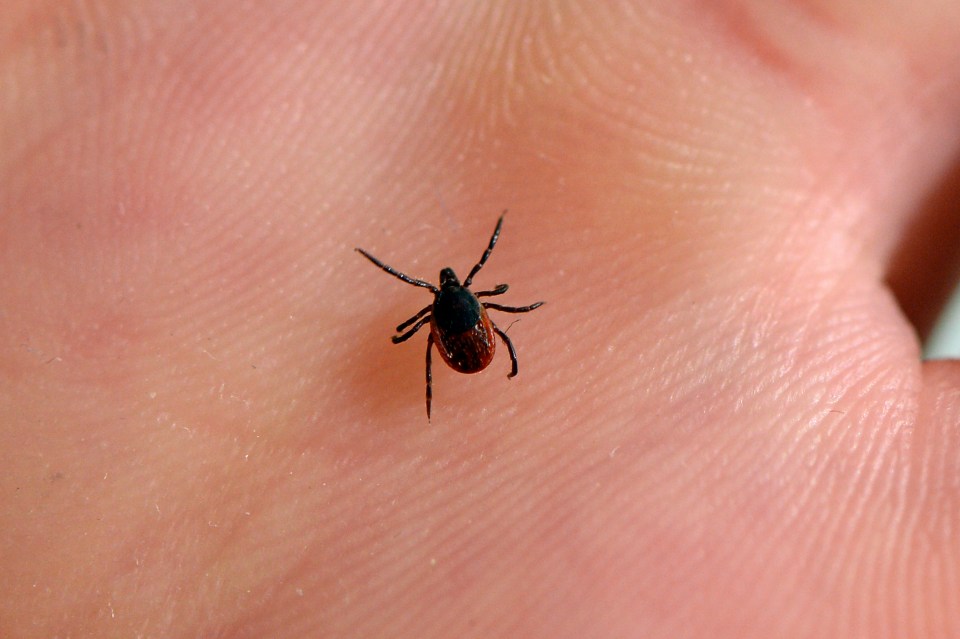A WOMAN lost great chunks of her hair after being bitten by a tick.
The 28-year-old initially noticed strands falling out around the site of the bite on the top of her head.
But one month later, her alopecia “rapidly spread” across the entire scalp.
She was left with thinning locks, bald patches, and yellow and black dots all over her head.
The unnamed patient, from Boston, Massachusetts, US, tried over-the-counter vitamins and steroid injections, but nothing seemed to help her hair grow back.
Eventually, she visited Boston University Medical Center, where she was given a Severity of Alopecia Tool (SALT) score of 52, putting her in the “severe” category.
The woman, who also had “well-controlled” polycystic ovary syndrome, began taking the steroid prednisone before moving to baricitinib, often used to treat rheumatoid arthritis, alopecia and eczema.
After four months on the medication, she noticed “significant regrowth in all prior alopecic sites apart from the tick attachment site and the immediate surrounding area”.
While hair loss is a rare complication of tick bites, more cases are being recorded.
Medics wrote in JAAD Case Reports: “Tick bite alopecia, although rare, has maintained a relatively predictable clinical course.
“Hard tick scalp attachment typically induces tissue necrosis [death] and the formation of an eschar [dead tissue that forms over healthy skin that then sheds] that ultimately progresses to a patch of moth-eaten-appearing cicatricial alopecia [scarring hair loss].
“Surrounding hair loss can occur around the attachment site.”
They added that hair loss can resolve within three months, but it can take more than five years to come back.
Ticks are small, spider-like creatures that feed on the blood of birds and mammals – including humans.
They are usually found in grassy and wooded areas, and are most active between March and October, according to the NHS.
But experts warn the bugs are becoming increasingly common, particularly in the UK, as winters get milder and cities get more green spaces.
Sally Cutler, professor of medical microbiology at the University of East London, wrote in The Conversation: “It’s difficult to estimate how much tick populations have really increased, and whether this is part of a long-term trend, because tick abundance surveys tend to be localised and sporadic, and the tick life-cycle typically spans around two years.
“But we are seeing both an upsurge of some species and the establishment of new ticks in the UK in recent years.
Tick bites aren’t usually painful, but they can cause a red lump to develop, which can trigger swelling, itchiness, blistering and bruising.
The animals can also carry and transmit diseases, such as Lyme disease, tick-borne encephalitis, and Crimean-Congo haemorrhagic fever (CCHF), which can be deadly.
As demonstrated by this case study, they can also have less common side effects like hair loss.
If someone has been bitten by a tick and it is attached to the skin, you should try to remove it as soon as possible to avoid life-threatening complications, experts warn.
Contact your GP if you think you could have been bitten and you have a pink or red rash, a temperature of 38C or above, other flu-like symptoms such as a headache or joint pain, and swollen lymph nodes.
How to prevent tick bites – and remove the bugs
There are a few things you can do to lessen your likelihood of tick bites.
Firstly, try and cover as much of your skin as possible while walking outdoors and tuck your trousers into your socks.
You should also be using insect repellent containing DEET on your clothes and skin, and wearing light coloured clothing so you can spot a tick easily.
Also stick to paths where possible when you’re out walking.
How can I remove a tick safely?
To remove a tick safely:
- Use fine-tipped tweezers or a tick-removal tool. You can buy these from some pharmacies, vets and pet shops.
- Grasp the tick as close to the skin as possible.
- Slowly pull upwards, taking care not to squeeze or crush the tick. Dispose of it when you have removed it.
- Clean the bite with antiseptic or soap and water.
The chance of getting ill is low. You do not need to do anything else unless you notice a rash or become unwell.
If either of these happen, make sure to see a GP so you can get treatment as soon a possible.



